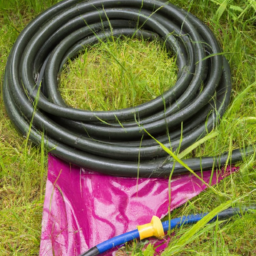How To Patch a Garden Hose
Table of Contents []
How To Patch A Garden Hose
Introduction:
Gardening has become a popular pastime over the past few years, and it's no surprise that garden hoses often get worn down or cracked. Patching up a garden hose is an easy and cost-effective solution to extend the life of your favorite hose. In this article, we break down the best methods for patching your garden hose and how to properly store it for the long-term.
Process overview:
1. Find the Leak: The first step in patching your garden hose is to locate the leak. This is best done by running water through the hose and inspecting different sections for signs of wear or damage. If you have trouble pinpointing the hole, you can also fill the hose with water and place your hand over it until you feel the pressure drop.
2. Shut the Water Off: Once you have identified the leak, the next step is to turn off the water supply and make sure there's no water left in the hose. If there's a significant amount of water in the hose, use a sponge and rag to remove the remaining water.
3. Dry the Hose: To ensure that you get a secure patch, it's important to dry the hose off completely before proceeding with the patching process. Submerge the hose in a bucket of water and let it sit for about 5 minutes to ensure that it absorbs most of the water.
4. Prepare the Hose for Patching: Once the hose has dried off, you can begin to prepare the area for patching. Use an emery cloth or sandpaper to roughen up the area around the leak. This will ensure that the patching material will adhere properly and won't come off easily.
5. Select and Apply the Patching Material: You have a few different options when it comes to patching material. Rubber patches are the most popular option and tend to work best for smaller holes. You can also use a self-adhesive patch, but it's important to apply it carefully and make sure the patch completely covers the entire hole.
6. Store the Hose: To extend the life of your hose, it's important to store it properly so that it doesn't become damaged again. A good rule of thumb is to store the hose in a cool, dry place, such as a shed or garage. You can also use a hose reel to keep the hose in good shape.
In Summary:
Patching a garden hose is a simple and affordable solution for extending the life of your favorite garden tool. By following the steps outlined in this article, you can easily patch up any holes in your garden hose and ensure it stays in good shape for years to come. Before patching, make sure to locate the leak, shut off the water supply, dry the hose, and prepare the area for patching. To complete the patching process, you can select from rubber patches or a self- adhesive patch. Once the hose is fixed, make sure to store it in a cool, dry place to keep it in top condition.

Previous Page
